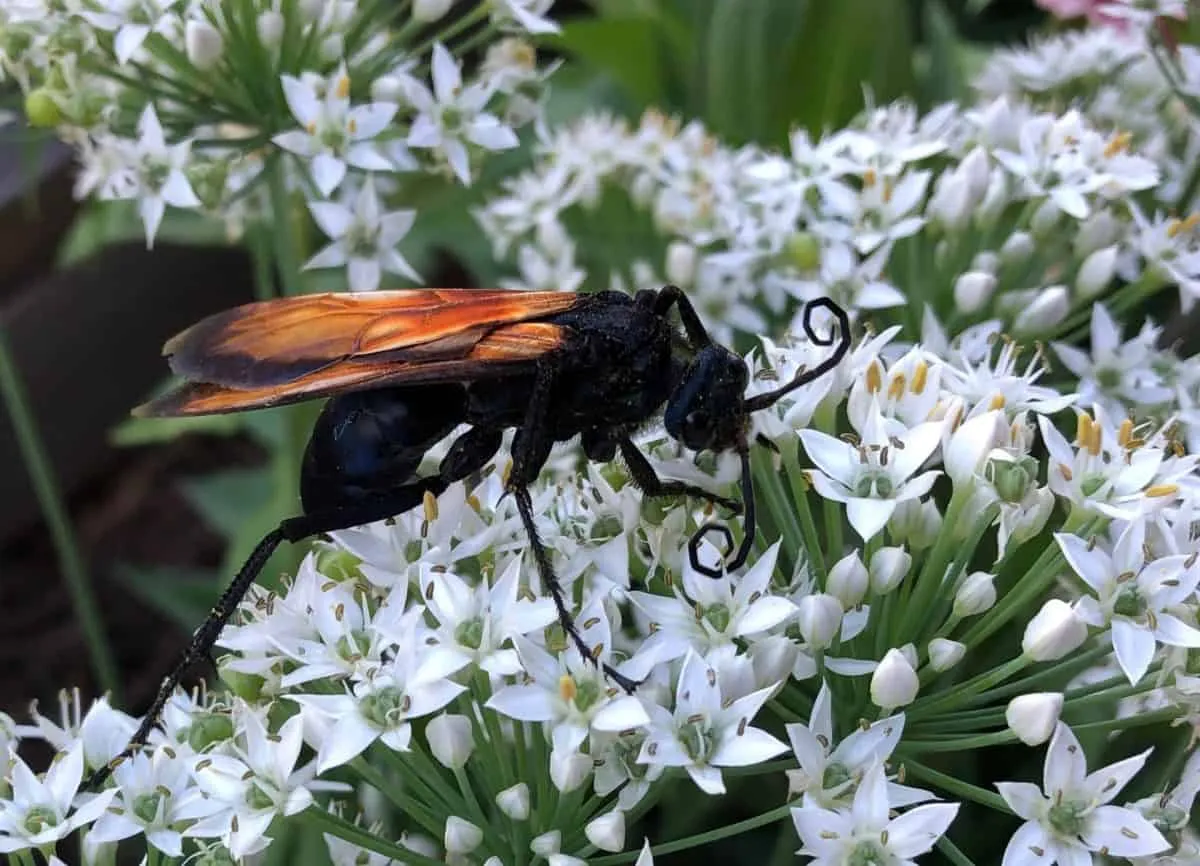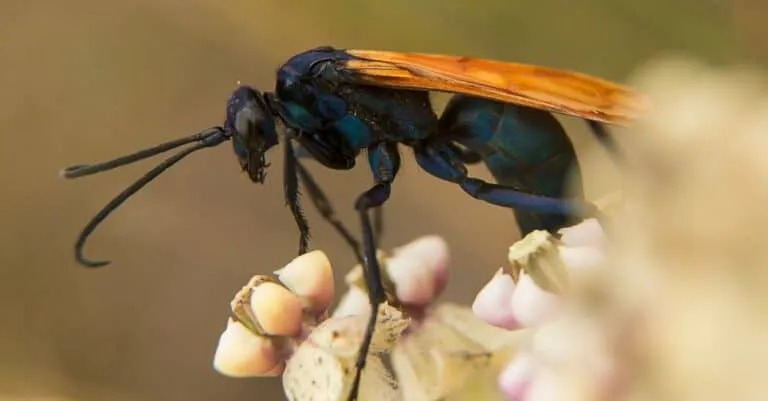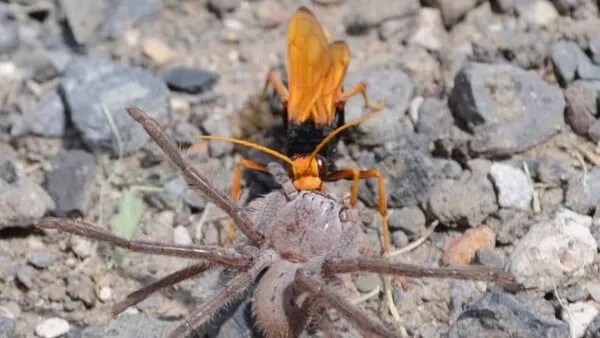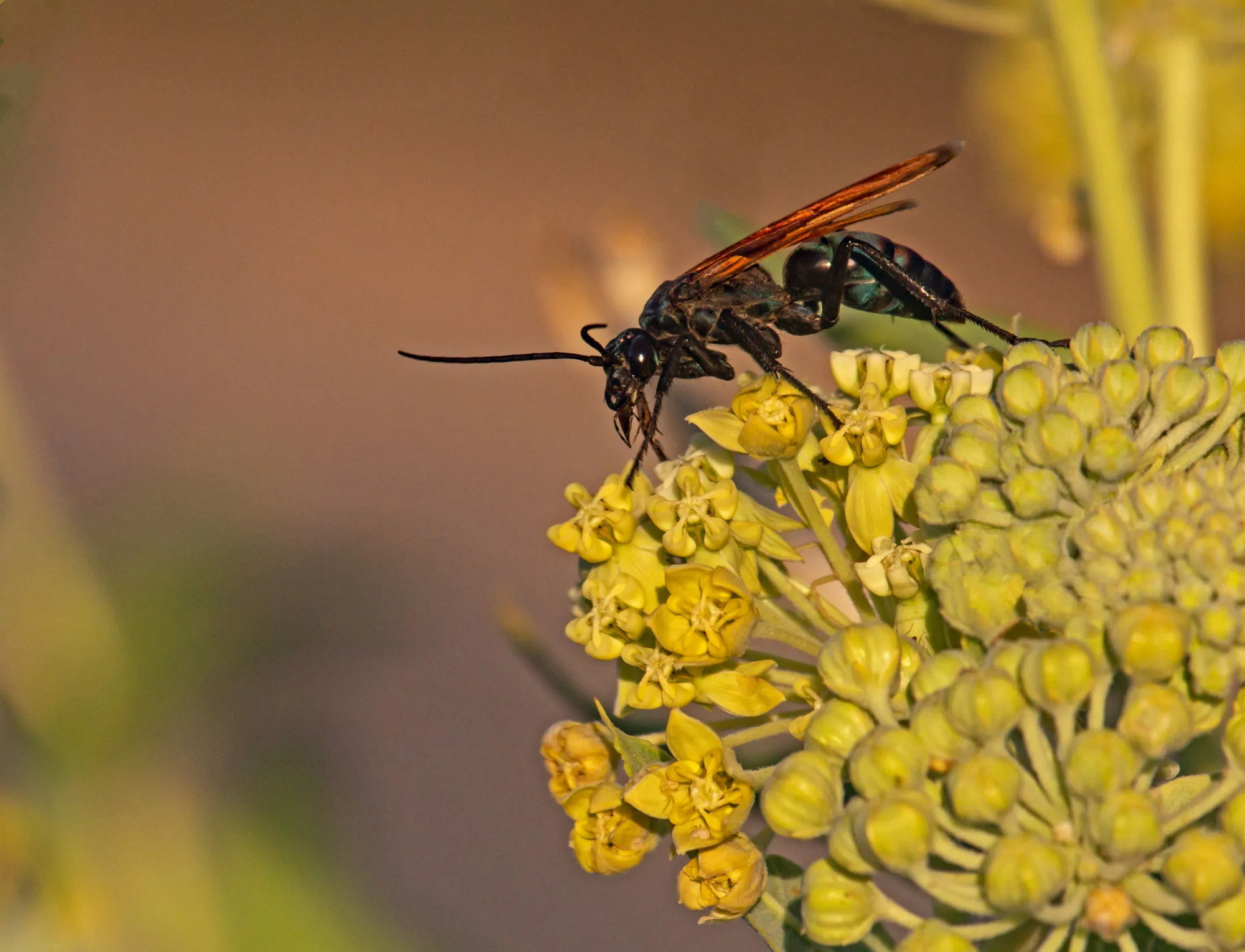What Do Tarantula Hawks Eat?
The tarantula hawk, a formidable predator, is known primarily for its specialized diet centered around one particular species: the tarantula spider. These wasps, renowned for their size and potent sting, are not just named after their prey; they are almost entirely reliant on tarantulas to sustain their life cycle. The diet of a tarantula hawk is thus highly specific, with the adult wasps feeding on nectar and pollen to obtain energy, and the larvae feeding on a single tarantula per larval development. This unique dietary habit sets them apart in the insect world, making them a fascinating subject of study for entomologists and nature enthusiasts alike. The tarantula hawk’s food choices are a testament to their evolutionary adaptations, allowing them to thrive in environments where tarantulas are abundant, and demonstrating a remarkable predator-prey relationship.
The Tarantula Hawk Diet Unveiled
Unveiling the tarantula hawk’s diet goes beyond simply stating that they eat tarantulas; it delves into a complex life cycle and intricate behaviors. Adult tarantula hawks subsist on nectar from various flowers and pollen, which provides them with the necessary energy to fly, hunt, and reproduce. This dietary preference makes them pollinators, though it is a secondary role to their predatory behavior. The true centerpiece of their diet is the tarantula spider, which is paralyzed by the female wasp’s sting. The paralyzed tarantula then serves as a host for the wasp’s egg. Once the egg hatches, the larva consumes the still-living, yet paralyzed, tarantula from the inside out, growing and developing before pupating and eventually emerging as a fully grown tarantula hawk.
The Role of Tarantulas in the Tarantula Hawk’s Diet

The role of tarantulas in the tarantula hawk’s diet is fundamental; it’s the very foundation of their survival and reproduction. Tarantulas provide the tarantula hawk larvae with a source of food, enabling them to complete their life cycle. The female wasp meticulously selects a tarantula, often larger than itself, and paralyzes it with a precisely aimed sting. She then drags the immobilized spider to a burrow or suitable location, where she lays a single egg on the tarantula’s abdomen. The paralyzed tarantula remains alive, allowing the larva to feed on the fresh tissues of the host spider. This strategic predation is a testament to the tarantula hawk’s evolutionary prowess and the intricate balance of nature.
The Tarantula Hawk’s Hunting Strategy
The hunting strategy of the tarantula hawk is a marvel of nature, showcasing precision, courage, and a deep understanding of its prey. The female wasp, equipped with a formidable stinger, actively seeks out tarantulas, often found in their burrows or roaming the ground. The hunt begins with the wasp locating a tarantula, carefully approaching to avoid being attacked. The wasp then engages in a calculated confrontation, using its agility and aerial prowess to outmaneuver the spider. Once the tarantula is within reach, the wasp strikes, delivering a paralyzing sting to a critical ganglion in the spider’s nervous system. This precise attack is crucial, as it immobilizes the tarantula without killing it, ensuring the spider remains fresh for the developing larva.
How Tarantula Hawks Subdue Tarantulas
Subduing a tarantula is no easy feat, but tarantula hawks are well-equipped for the task. The wasp’s stinger, a modified ovipositor, is the primary weapon in this showdown. The stinger is used to inject venom into the tarantula’s nervous system, specifically targeting the ganglia that control the spider’s movement. The venom doesn’t kill the tarantula; instead, it induces a state of paralysis, rendering the spider defenseless. This paralysis is critical, allowing the wasp to drag the spider to a safe location, where it can lay its egg without risk. The wasp’s ability to accurately target and deliver the venom is a testament to its refined hunting skills and evolutionary adaptation.
Tarantula Hawk Venom and Its Effect

Tarantula hawk venom is more than just a paralyzing agent; it is a finely tuned cocktail of neurotoxins designed to disable the tarantula without killing it. The venom works by blocking the transmission of nerve signals, effectively paralyzing the spider. This paralysis is essential for the wasp’s survival strategy. The venom’s effect is temporary, keeping the tarantula alive but immobile, thus providing a fresh food source for the developing larva. The composition of the venom allows the larva to consume the tarantula slowly. The bite from a tarantula hawk is considered one of the most painful stings in the world, though the pain is short-lived. The potency and specificity of the venom demonstrate the tarantula hawk’s specialized adaptation to its unique diet.
The Tarantula Hawk’s Larval Diet
The tarantula hawk larva has a truly unique and grisly diet: a still-living, paralyzed tarantula. After the female wasp lays an egg on the paralyzed spider, the larva hatches and begins to feed. It starts by consuming the less vital parts of the tarantula, such as the legs, conserving the vital organs to keep the host alive for as long as possible. This strategy ensures that the larva has a constant supply of fresh, nutritious food. The larva grows rapidly, molting several times as it develops. It feeds on the spider for several weeks before pupating, eventually emerging as a fully grown tarantula hawk. This dependency on a single food source highlights the specialized nature of the tarantula hawk’s life cycle.
The Importance of Prey Size
Prey size is a crucial factor in the tarantula hawk’s survival and reproductive success. The female wasp meticulously selects tarantulas that are large enough to sustain her larva but not so large that they pose a significant threat during the hunting process. The size of the tarantula directly affects the amount of food available to the larva. A larger tarantula provides more resources, resulting in a larger and healthier wasp. This selection pressure has likely influenced the evolution of hunting strategies and venom potency. The wasp’s ability to accurately assess and subdue a tarantula of the right size ensures the success of its offspring, highlighting the intricate balance within the predator-prey relationship.
Factors Affecting Tarantula Hawk Diet

Several factors can influence the diet of the tarantula hawk, including the availability of tarantulas, the environmental conditions, and the wasp’s own health. The abundance of tarantulas in a particular habitat directly affects the wasp’s food source. Warmer temperatures can also affect the tarantula’s activity, which in turn influences the wasp’s hunting success. Seasonal variations and geographic distribution play a role, as tarantula populations can fluctuate. Furthermore, the wasp’s own health, and the need for sustenance, can impact its choices. These factors all combine to influence the dietary habits and hunting success of the tarantula hawk, making it a dynamic and adaptable predator within its ecosystem.
Habitat and Dietary Variations
While tarantulas are the primary food source for tarantula hawks, there can be slight variations in their diet depending on the habitat. Different species of tarantulas, with varying sizes and behaviors, can influence the wasp’s hunting strategy. The availability of specific tarantula species in a particular region dictates the wasp’s choice of prey. Some tarantula hawk species are more specialized and only feed on specific tarantula species. In areas where tarantulas are scarce, the wasp might need to search further or adapt its hunting techniques. However, the core of the tarantula hawk’s diet, which is centered on the tarantula, remains consistent across its various habitats, reflecting its specialized predatory lifestyle.
The Significance of the Tarantula Hawk’s Diet in the Ecosystem
The tarantula hawk’s diet plays a crucial role in the ecosystem, influencing the population dynamics of both tarantulas and other species. By preying on tarantulas, the tarantula hawk helps to regulate the spider population, preventing any single species from dominating the ecosystem. Furthermore, the wasp’s feeding habits contribute to the flow of energy and nutrients within the food web. The wasp’s activity also affects the behavior of other species, as potential prey animals become wary of areas where tarantula hawks are present. The specialized diet of the tarantula hawk illustrates the intricate connections between species and highlights the importance of biodiversity within the ecosystem, where each organism plays a unique role in maintaining ecological balance.
